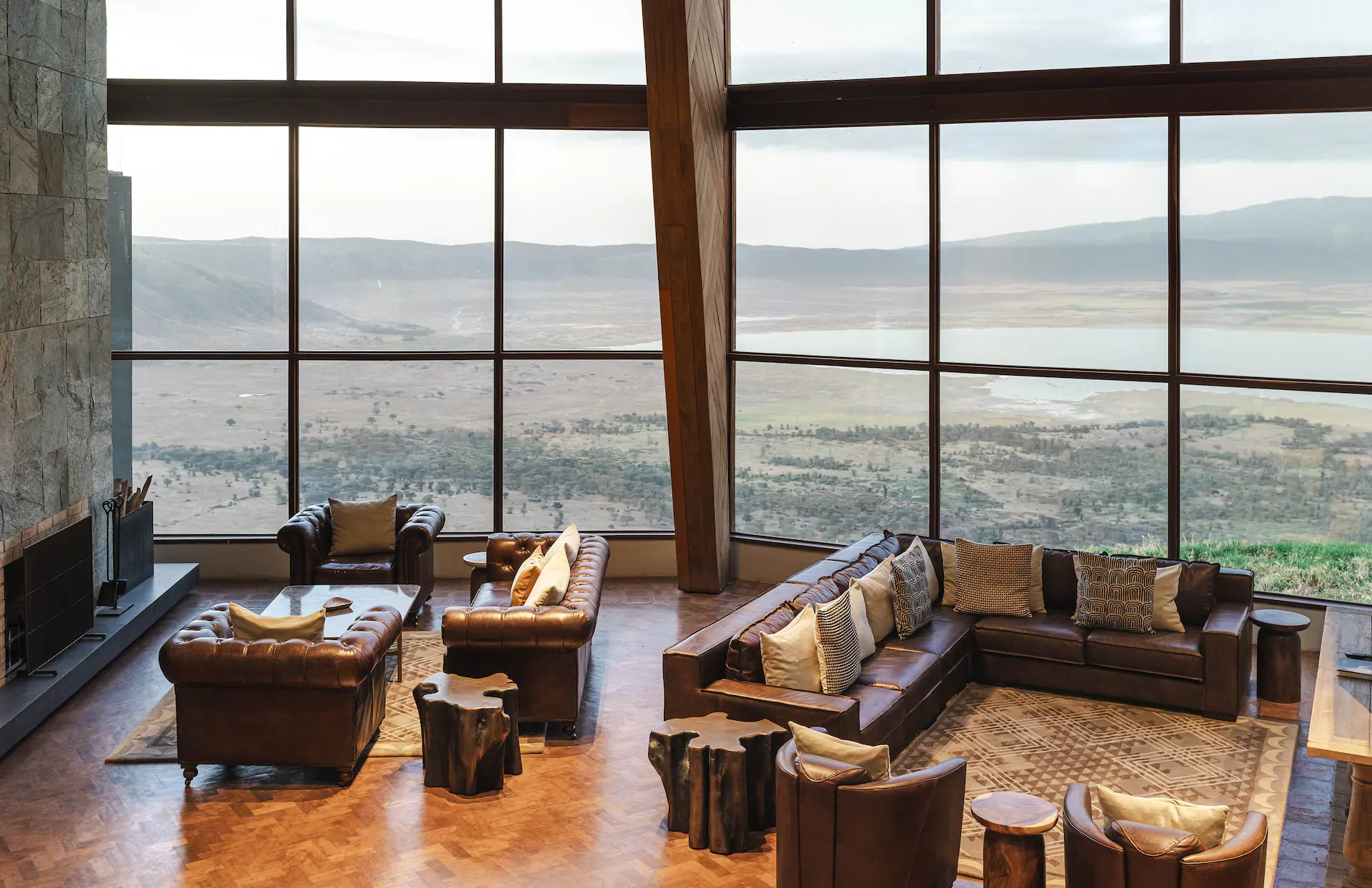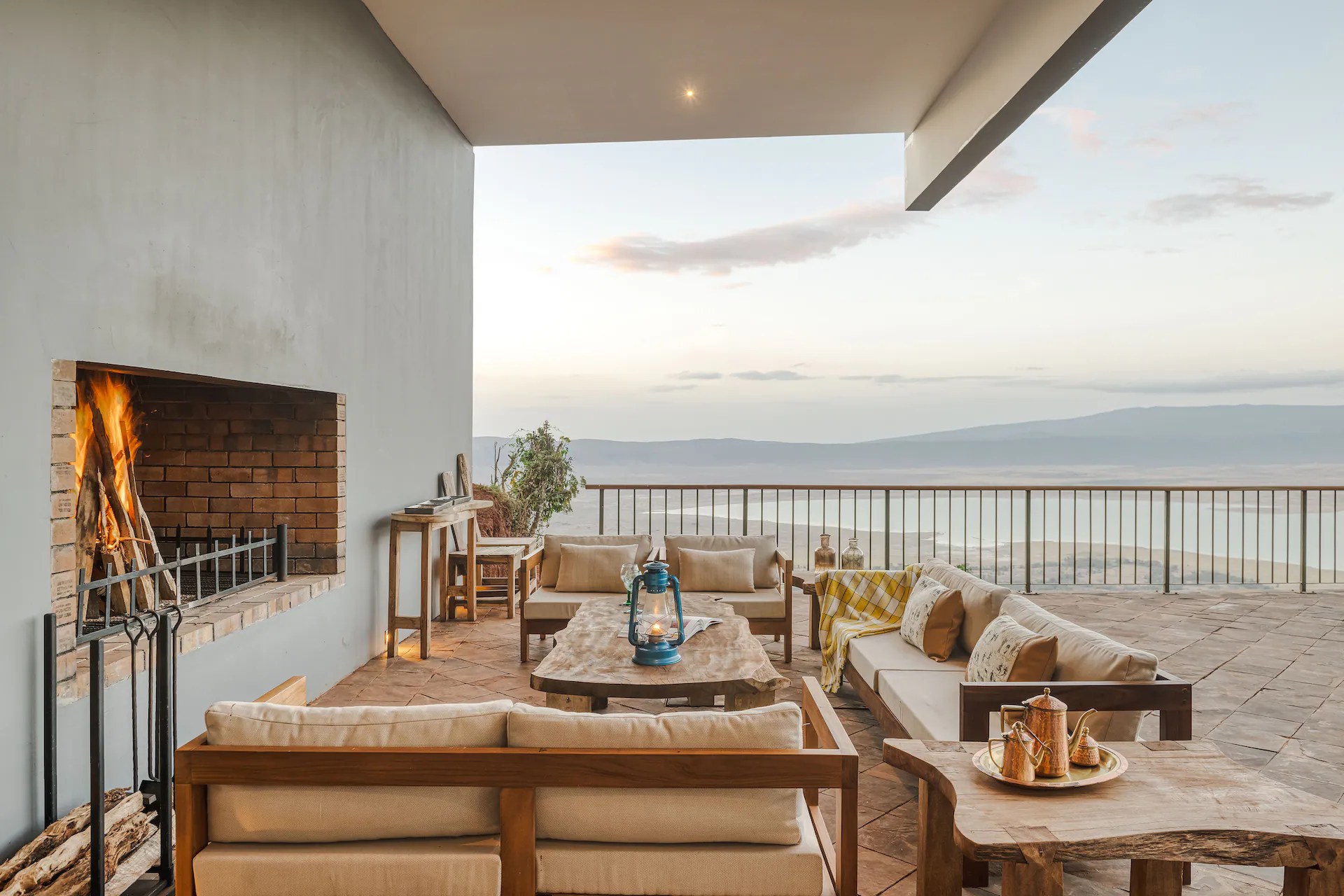Welcome to Tanzania
Day 1

Upon arrival at the airport you will be met by your guide who will transfer you to your welcoming accommdations at the modern Gran Melia Arusha for the night. Enjoy dinner and relaxation before your adventure begins the next day.

Gran Melia Arusha
Arusha to Tarangire
Day 2

Following your breakfast at the hotel, we will pick you and drive you to Tarangire National Park for game viewing. The park is well known for large number of elephants that congregate here, as do many wildebeest and zebras. There are also significant population of impala, giraffes, eland and buffalo. Thompson’s, gazelle, Coke’s hartebeest, bohor reedbuck and both greater and lesser kudu are found here. Lion are common throughout Tarangire, as are leopard.

Your day concludes as you are welcomed at your reserved accommodation Maromboi Tented Camp located in a special reserved buffer zone located just outside of Tarangire National Park. Animals freely roam between the park and the lodge zone, so tonight you will fall asleep to the hypnotic song of African wildlife.
Maromboi Tented Camp
Tarangire to Serengeti
Day 3

The exciting sounds of Africa will awake you from your sleep. After breakfast we will start heading to Serengeti National Park. Serengeti offers an exotic game-viewing experience in the whole of Africa giving you an up-close look of the animals you've only seen in National Geographic: great herds of buffalo, smaller groups of elephant and giraffe, and thousands of eland, topi, kongoni, impala and Grant’s gazelle.
Later during the day, you will proceed to your reserved accommodations, Lemala Nanykie Tented Lodge.
Lemala Nanykie Tented Lodge
Central to Northern Serengeti
Day 4

After breakfast at leisure in your camp, today we head north of the Serengeti National Park, a two hour game viewing drive en route to the great Mara River. In this time of the year we will be looking for the great herds of migration congregating along side hoping to cross this fast flowing river filled with crocodiles. Such sightings are absolutely remarkable, and not to be missed. We will monitor the different points for potential crossings. The experience is very unpredictabile and is not guaranteed. Migration safari's scheduled from late July to early September provide an extremely high probability of success for viewing this extraordinary moment.
Your nights in the northerrn Serengeti will be spent at the Olakira Migration Camp perfectly designed to connect you to nature. Hot bucket showers, starry night clear skies, delicious meals, and escorted walks to and from your tent will make your experience here unforgettable and safe.
Olakira Migration Camp
The Great Wildebeest Migration
Serengeti National Park has been recognized as the best natural destination worldwide for three consecutive years. Indeed, its appeal lies in the opportunity to interact closely with a vast array of wildlife within a stunning natural environment, making this park highly renowned.
Whenever talking about Serengeti one must talk about the great annual migration of wildebeest and zebras.
By the month of January – April ,the heads are all spread at the southern most part of Serengeti, the flat Palin’s in this areas got formed during Ngoro Ngoro highlands eruptions million of years ago. This plains now so rich in mineral provide millions of migrating animals with high nutritious grass.
January-March
It's on this plains during month of February where more than half a million wildebeest calve on the window of two to three weeks.
May-June
During this time of year, the migration begins towards the central and then western regions of the Serengeti, coinciding with the onset of the dry season. The central Serengeti, with its year-round underground water springs, becomes an ideal destination for the herds. Meanwhile, the western Serengeti, being the lowest part of the park, retains its grass longer before it dries out.
July-November
At this time of year, the herds reach the northernmost part of the park, where they spend a considerable amount of time. During the late short rains season, they are still found here. Driven by a strong instinct to seek better grazing grounds, the herds face a formidable challenge: crossing the Mara River, which is teeming with crocodiles. This crossing, which can occur at various parts of the river at different times, is considered one of the most extraordinary natural sights, rarely seen elsewhere. The river crossing reaches its peak around August, making this period the optimal time to witness this spectacular event.
December
The herds will start heading back south via central Serengeti. They reach the southern plains in early January. Then it all happen again the following season.
Migration is estimated to have over 3 millions animals in total , majority being wildebeest and zebra
Northern Serengeti
Day 5

After breakfast, we will proceed for a full day game drive viewing the great wildebeest migration river crossing. Resident wildlife numbers are exceptionally high in the Wagakuria area. The key feature is the Mara River and there is a great chance to see the herds cross the Mara River to the north on one day and back south a few days later. Please note that it can be very difficult to witness crossing and is sometimes a matter of luck. A herd can be seen next to river and only decide to cross a couple of days later. This area is a stunning region with kopjes, woodland, riverine vegetation and open plains, similar to Kenya's Masai Mara Game Reserve. At sunset head home to dinner and relaxation.
Northern Serengeti
Day 6

We will go on a full-day wildlife drive to see the huge migration in the Mara area after breakfast. The Wagakuria region has a particularly high density of local animals. The Mara River is the main feature, and there is a good chance that you will see the herds cross it to the north on one day and back to the south on another day. Please be aware that seeing a crossing can be very challenging and occasionally depends on luck. A herd is seen adjacent to the river, but they don't decide to cross until a few days later. Similar to Kenya's Masai Mara Game Reserve, this area is breathtaking with kopjes, woodland, riverine flora, and wide plains. The northern Serengeti is much more than wildebeests. Each day you will combine migration experiences with traditional game viewing with opportunities to see lion, cheetah, leopard, hippos, giraffes, elephants, antelope, gazelle, hyenas, vultures, storks, and so much more.
At the end of an exciting day of game driving head home to your accommodations.
Northern to Central Serengeti
Day 7

After breakfast, you proceed with game drives as we drive towards Central Serengeti National Park exploring the rolling plains in search of large predators and the gentle herbivorous, on which they feed.
As sunset we will head to your reserved accommodation at Four Seasons Central Serengeti.
Four Seasons Central Serengeti
Central Serengeti
Day 8

Enjoy your last full day game drives safari in the Serengeti exploring the rolling plains of Serengeti National Park in search of large predators and the gentle herbivorous, on which they feed. Later during the day, you will return to your reserved accommodation at the Four Seasons Central Serengeti inside the national park
Serengeti to Ngorongoro Crater
Day 9

After early breakfast, you depart and drive to Ngorongoro Highlands ready for the game viewing in Ngorongoro Crater. Your driver guide will help you spot some of the many species at the crater floor teaching you about their fascinating habits and habitats. Also, this is perhaps the best place to see the Black Rhino. If you are itching to see the Big 5, in Ngorongoro you are likely to spot all five in one place.
Later during the day, you will start heading to your reserved accommodation perched on the rim at the Ngorongoro Gran Melia.
Ngorongoro Gran Melia
Manyara and Farewell to Tanzania
Day 10

After breakfast, our driver guide will pick you up and drive you to Lake Manyara National Park for game viewing. The park offers varied ecosystems, breathtaking views and incredible ecological variety in a small area, rich in wildlife and amazing numbers of birds. Lake Manyara’s game includes baboons, buffalo, wildebeest, giraffe, zebra, warthog, impala.
Later during the day, you will start driving back to Arusha and proceed to Kilimanjaro International Airport accordingly to your flight schedule.































































